Deadly Deer Decoys
Mark Kayser 09.11.17
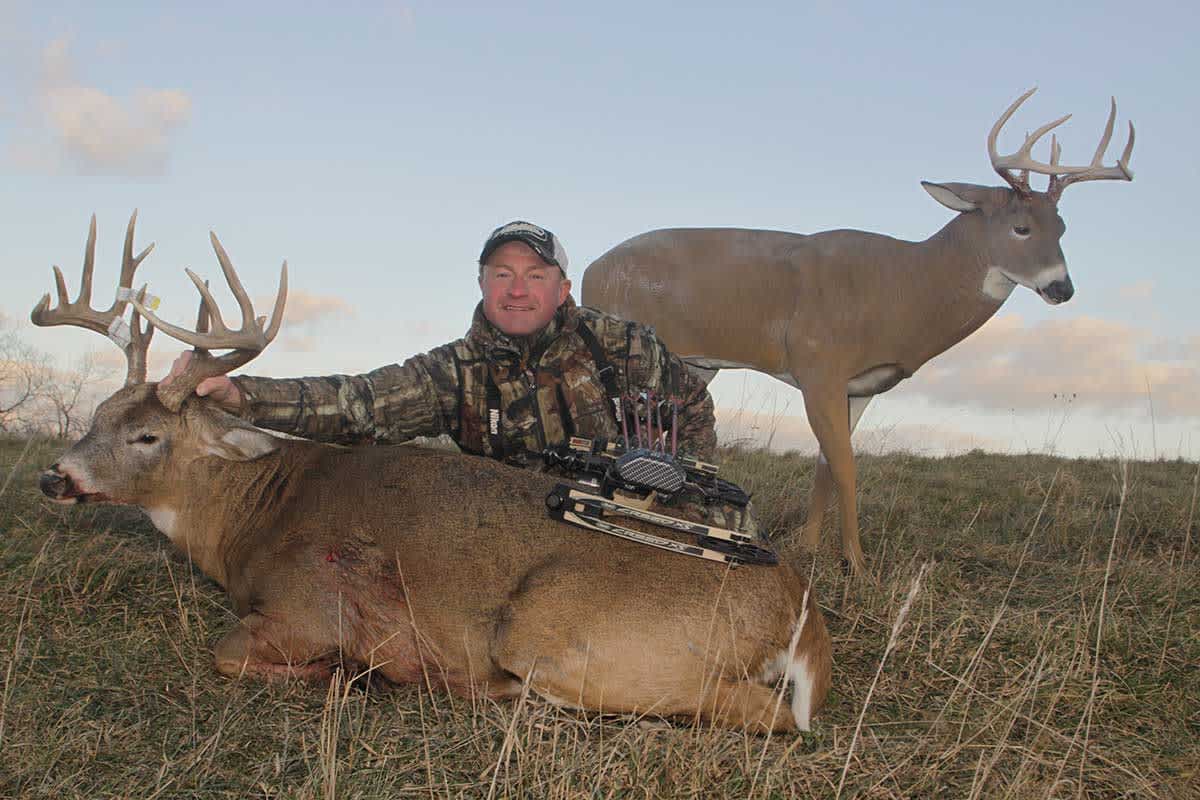
Are you searching for a way to lure deer closer for archery shots, distract their focus and energize your annual bowhunt? Consider a deer decoy to open up a new universe of whitetail hunting excitement.
The word “oblivious” came to mind the first time I ever saw a buck react to my buck decoy. A soft grunt lured him toward my treestand, and my decoy’s rigid, yet intimidating stare drew the buck into bow range on a rope. As the buck approached, he raised his hackle, laid his ears flat against his head and took on a stiff-legged walk in parallel pass to the plastic. At 15 yards, I drew my bow and released an arrow with the buck so focused on the decoy he never knew of the imminent danger. The buck even paused to look back after bounding from the shot with a look of perplexity before he toppled.
Since that day back in 1990s, I incorporate decoys whenever the setup looks applicable. I’ve decoyed bucks in September with success, continuing into late-season through December.
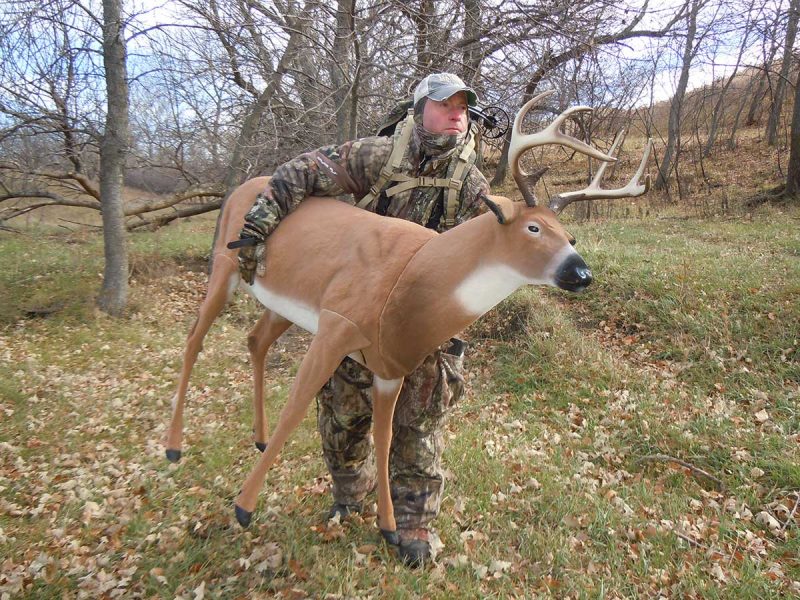
Buck Decoys — The Holy Grail
Buck decoys provide the greatest action and your best bet to get a bruiser buck within bow range. A few effective ones include the Flambeau Masters Series, the Primos Scar, and the “you’ve got to see this deke to believe it” Dave Smith Decoys Posturing Buck.
You can begin using a buck decoy anytime, but mid-October through November is the best window. During pre-rut, bucks set the pecking order and might engage your decoy. During the rut, bucks will challenge your decoy for territorial ownership and to see if your decoy is guarding a hot doe.
To guarantee close shots, position your decoy close; 20 yards is ideal. If you place the decoy beyond 30 yards and a buck circles to 40 yards, or farther, then you’ll face a long shot, possibly cluttered by limbs. I prefer to stake a buck decoy upwind within 10 to 20 yards of my site. If a buck interacts, then it results in a textbook-perfect shot less than 20 yards.
Terrain can aid your ambush and force a buck into the perfect shooting lane. Field edges of standing crops, steep slopes, river banks, impenetrable brush and similar features work in your favor to force a buck into a funnel, and direct his attention away from you as he eyes the decoy.

A huge consideration is decoy stance. Whitetails have a distinct ritual that repeats itself in nearly every buck encounter. When two bucks meet during the rut period, they nearly always go head to head and pass in a parallel fashion. While making this “fly by,” they assume a stiff-legged approach and bristle their body hair to portray the biggest, meanest look possible. They also paste their ears to the side of their head, so be sure to turn your decoy ears in a rear-facing angle if possible. Another tactic is to remove one antler from your decoy to give the impression of an easy-to-whip buck.

An approaching buck could attempt to get downwind, but if they feel confident, they forget wind and advance for a showdown. Nevertheless, work the angles to ensure a buck can get downwind of the decoy, but stay well upwind of your hide.

In addition to upwind placement, you need to set your decoy for the best shot taking into consideration the parallel passing. Broadside or quartering-toward are your best options for decoy stance. Broadside results in a buck passing broadside, and if your decoy is quartering-toward, that means any approaching buck will offer a quartering-away shot. Make sure your decoy is scent-free, and if you want to enhance the ruse, then add in dominant buck scent with a scent wick. Hang it on adjacent vegetation or even on a decoy faux antler.
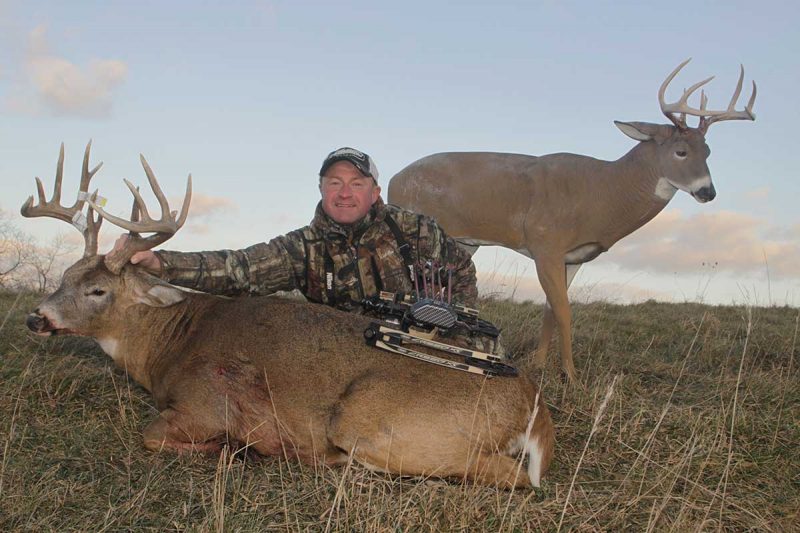
Doe Decoy — The Seductress
Late November and into the post-rut blues of December, you need to remove both antlers to give your decoy the look of a seductress. Bucks are worn out from rut rigors, but still not too tired to partake of one last Match.com date. Placing your doe-appearing decoy in likely buck visiting locales such as food plots, cropland field edges, or in avenues leading from a sanctuary, could tempt a buck into a tryst.
Follow the same rules and keep your decoy close. If a buck is wary, he could easily circle wide and scent-check the doe decoy without ever clearing bow range. Terrain can also again help nudge a buck close if you can put the doe decoy upwind, but in a situation that forces a buck closer for a downwind whiff.
You also need to position a doe decoy differently than a buck decoy for obvious reasons. Bucks investigating a doe decoy always approach the decoy from the rear and downwind of your plastic ploy. With that vision in mind, you should place your decoy either broadside or facing away in a slight quartering-away posture. Broadside means a buck will also be broadside when he moves in behind the doe, and if the doe is quartering-away then the buck will also quarter-away while lining up for a landing.
To boost receptiveness to your leading lady, add doe estrus scent on a wick. You can even tack or tape it to the rear of the doe decoy for a complete fantasy scenario.
Decoy Hookups
A final decoy deception you should consider is the hookup. This system includes a bedded doe such as the Rinehart Doloma and a buck standing guard, downwind of the lady in waiting. Use this thespian handiwork during the peak rut or in the post-rut period when bucks are actively seeking a fling.
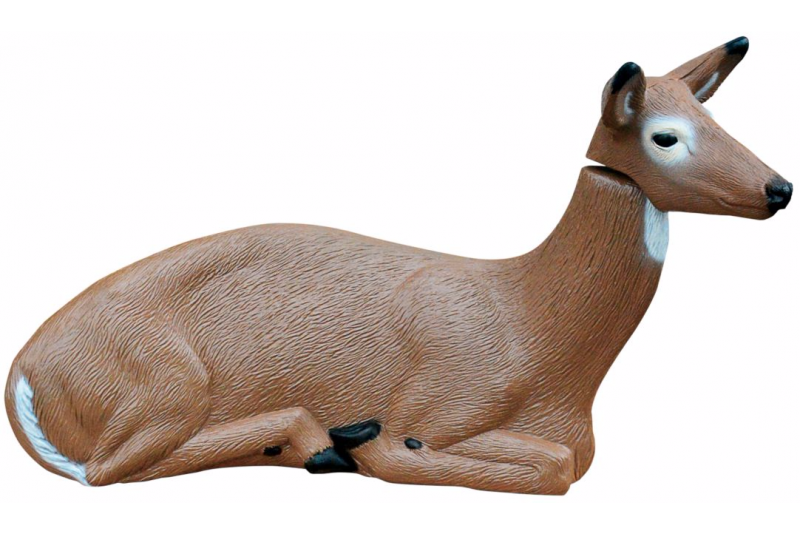
Planting both decoys broadside to your treestand is best. An incoming suitor could show up and parallel walk the buck decoy, or shyly slide in behind the wooing pair to scent-check the scene. An application of doe estrus is warranted, and it wouldn’t hurt to add a splash of dominant buck urine for further scent confirmation. Keep the doe in a docile appearance, but again turn the buck decoy’s ears facing back.
When a whitetail buck finally takes the decoy bait, you’ll be front row to the greatest show on earth. You’ll also be situated for the easiest shot of your bowhunting career.
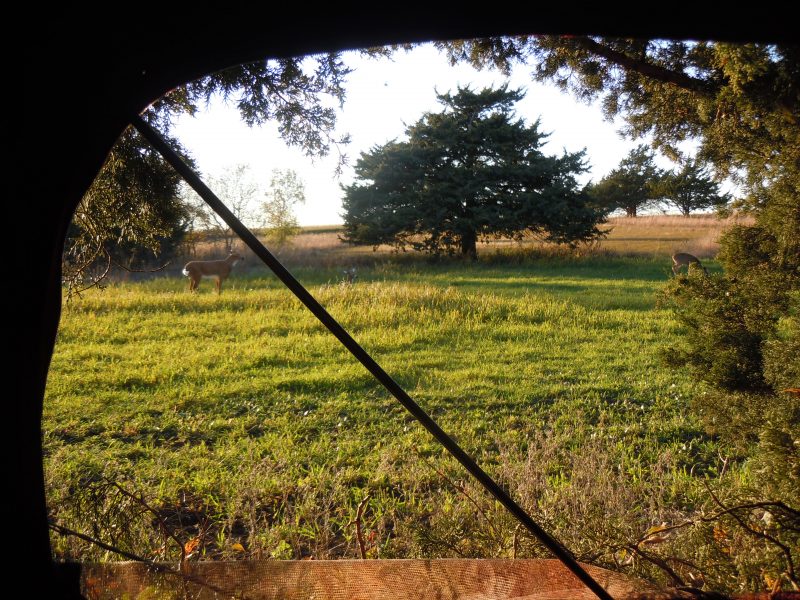
This article was produced in cooperation with Cabela’s.

